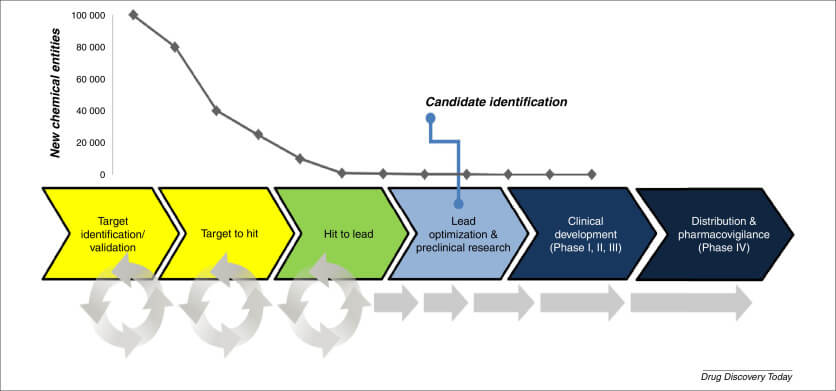Imagine a chessboard where every move reshapes the game—pawns merge, knights leap into new territories, and kings secure their reign. That’s the world of mergers and acquisitions (M&A) in generic drug development today. For business professionals eyeing market domination, M&A isn’t just a buzzword; it’s a strategic power play that can transform raw data into a winning edge. But here’s the catch: while the opportunities are tantalizing, the challenges are equally formidable. How do you turn this high-stakes game into a checkmate? Let’s dive in and explore the dynamic landscape of M&A in the generic drug sector, where innovation meets economics, and ambition meets reality.
What Are Mergers and Acquisitions in Generic Drug Development?
Mergers and acquisitions are like the DNA of corporate growth—two companies either blend into one (merger) or one swallows the other (acquisition). In the realm of generic drug development, this means pharmaceutical giants or mid-tier players combining forces to churn out affordable, bioequivalent alternatives to branded drugs. Why does this matter? Because generics account for a massive chunk of the global pharmaceutical market—think 66.4% of prescription doses sold in the U.S. alone back in 2004, a number that’s only grown since.
The goal is simple yet ambitious: leverage combined resources to streamline production, cut costs, and flood the market with high-quality generics. Take Viatris, born from the merger of Mylan and Upjohn in 2020. It’s now a titan in the generics space, proving that M&A can catapult a company into a league of its own. But it’s not all smooth sailing—let’s unpack the opportunities and challenges that define this arena.
Why M&A Matters in the Generic Drug Industry
So, why should you care about M&A in generics? Picture this: a market projected to balloon from $411.99 billion in 2022 to $613.34 billion by 2030, growing at a steady 5.1% CAGR. That’s not just a statistic—it’s a goldmine for those who play their cards right. M&A fuels this growth by unlocking economies of scale, expanding product portfolios, and tapping into new geographies. It’s the rocket fuel that propels companies past smaller competitors.
But it’s more than just numbers. M&A reflects a strategic mindset—think of it as a calculated dance where every step aims to outmaneuver rivals. Whether it’s securing a foothold in emerging markets like Asia-Pacific or bolstering a biosimilars pipeline, M&A is the bridge between where a company is and where it wants to be.
The Big Opportunities of M&A in Generic Drug Development
Expanding Market Reach
Ever wondered how companies go from local players to global powerhouses? M&A is the answer. By acquiring or merging with firms in untapped regions, companies can plant their flags in high-growth territories. For instance, Teva’s $40.5 billion acquisition of Allergan’s generics business in 2016 didn’t just boost its portfolio—it cemented its dominance across continents. Emerging markets, with their rising demand for affordable drugs, are ripe for the picking, and M&A is the key to unlocking them.
Boosting Product Portfolios
In generics, variety is king. Merging with or acquiring a company with a complementary portfolio is like adding new tools to your toolbox. Suddenly, you’re not just making hypertension drugs—you’re also in oncology, immunology, or even biosimilars. Amgen’s push into biosimilars through strategic acquisitions is a prime example, diversifying its offerings and future-proofing its revenue streams.
Achieving Economies of Scale
Here’s a no-brainer: bigger is often better. M&A lets companies pool resources—manufacturing plants, R&D labs, supply chains—slashing costs per unit. When Viatris emerged, it didn’t just inherit Mylan’s expertise; it gained a sprawling network that drives down production costs. Lower costs mean competitive pricing, and that’s a winning formula in the price-sensitive generics market.
Accelerating Innovation
Think generics are just copycats? Think again. M&A can supercharge innovation by combining R&D firepower. Picture two teams, each with half a puzzle—merge them, and you’ve got the full picture. This synergy can lead to breakthroughs in complex generics or biosimilars, areas where innovation meets affordability.
The Flip Side: Challenges of M&A in Generic Drug Development
Regulatory Hurdles
If M&A is a race, regulators are the hurdles. Agencies like the FDA and FTC don’t just nod and smile—they scrutinized Teva-Allergan for antitrust risks, forcing divestitures. Navigating these waters demands time, money, and a knack for compliance. One misstep, and your deal’s dead in the water.
Integration Nightmares
Merging two companies sounds sexy until you’re knee-deep in clashing cultures and systems. Employees resist change, IT platforms don’t sync, and suddenly, that promised synergy feels like a pipe dream. A 2017 study noted that 70% of M&A deals fail to deliver expected value due to poor integration—sobering, right?
Market Competition Risks
Here’s the paradox: M&A aims to boost competitiveness, but it can backfire. Consolidate too much, and you’ve got a duopoly or monopoly—great until prices spike and regulators pounce. Between 2008 and 2013, generics with near-monopoly status saw price hikes of 59%, sparking shortages and scrutiny. Balance is everything.
Financial Strain
Big deals mean big bucks—and big risks. Teva’s Allergan buyout left it with a $34 billion debt pile, a burden it’s still wrestling with. Overpaying or misjudging synergies can turn a golden opportunity into a financial albatross.
How Data Drives M&A Success
Data isn’t just numbers—it’s the compass for navigating M&A. Want to spot the perfect target? Market analytics reveal growth trends and gaps. Need to justify a deal? Financial data crunches the ROI. Post-merger, real-time metrics track integration progress. As Subin Baral, EY’s Global Life Sciences Deals Leader, puts it, “Companies that harness data effectively turn uncertainty into opportunity.”
Case Studies: M&A Wins and Losses
Viatris: A Success Story
When Mylan and Upjohn merged into Viatris, it was a masterstroke. By 2024, it boasted a portfolio spanning 140 countries, leveraging scale to dominate generics. The secret? Meticulous planning and a laser focus on integration.
Teva-Allergan: A Cautionary Tale
Teva’s 2016 acquisition of Allergan’s generics arm promised glory—but delivered debt and regulatory woes. It’s a stark reminder that ambition without execution is a recipe for trouble.
Trends Shaping M&A in Generics Today
Rise of Biosimilars
Biosimilars are the new frontier—complex, high-value generics that demand hefty R&D. M&A is the shortcut, with firms like Amgen snapping up players to fast-track entry.
AI and Technology Integration
AI’s rewriting the playbook. Deals like Recursion Pharmaceuticals’ $712 million acquisition of Exscientia in 2024 show how AI-driven drug development is a hot M&A target.
Focus on Emerging Markets
China, India, Africa—emerging markets are buzzing. M&A here isn’t just about sales; it’s about R&D hubs and local expertise, despite challenges like the U.S. BIOSECURE Act looming in 2032.
Strategies to Overcome M&A Challenges
Due Diligence Done Right
Skimp on due diligence, and you’re toast. Thorough vetting—financial, legal, cultural—spots red flags before they sink you.
Cultural Alignment
People make companies, not just patents. Aligning cultures post-M&A keeps talent onboard and morale high.
Regulatory Roadmap
A solid regulatory plan isn’t optional—it’s survival. Engage experts early to dodge delays and penalties.
The Role of Leadership in M&A Success
Great leaders don’t just sign deals—they steer them. Vision, communication, and adaptability turn chaos into cohesion. Think of them as conductors, orchestrating a symphony from discordant notes.
Turning Data into Market Domination
Here’s the kicker: data isn’t static—it’s dynamic. Use it to spot trends, predict outcomes, and pivot fast. Companies that master this don’t just survive M&A—they dominate.
“In the generics game, data is your ace. Play it right, and you’re not just in the market—you’re owning it.”
— Adapted from industry insights, reflecting the power of data-driven M&A.
The Future of M&A in Generic Drug Development
What’s next? Expect tighter regulations, bolder tech bets, and a scramble for biosimilars. The winners? Those who blend agility with foresight, turning challenges into stepping stones.
Key Takeaways
- Opportunities abound: M&A opens doors to scale, innovation, and new markets.
- Challenges loom: Regulatory, financial, and integration hurdles test even the best.
- Data is king: Leverage it to transform risks into rewards.
- Strategy matters: From due diligence to leadership, execution trumps ambition.
M&A in generic drug development isn’t for the faint-hearted—it’s a high-wire act with blockbuster payoffs. Ready to step up?
FAQs
- Why is M&A so common in the generic drug sector?
It’s a fast track to scale, cost savings, and market expansion—key for staying competitive in a price-driven industry. - What’s the biggest risk in generic drug M&A?
Integration failure. If cultures clash or systems don’t mesh, the deal’s value evaporates. - How do biosimilars fit into M&A strategies?
They’re high-stakes, high-reward. Companies acquire expertise to jump into this lucrative niche. - Can small firms survive the M&A wave?
Yes, if they’re nimble—specializing in niches or partnering smartly keeps them in the game. - How does AI change M&A in generics?
It’s a game-changer, speeding up R&D and targeting deals with precision—like Recursion’s Exscientia buyout.
Cited Sources
- PharmiWeb.com, “Generic Drugs Market 2024-2035: Trends, Innovations, and Future Growth,” Published February 11, 2025.
- Globalization and Health, “Merger mania: mergers and acquisitions in the generic drug sector from 1995 to 2016,” Published August 22, 2017.
- European Pharmaceutical Review, “M&A outlook for pharma in 2025,” Published January 23, 2025.
- EY, “Smaller, Smarter Deals: Dealmaking Volume Stable But Value Is Down,” Published January 2025.




















